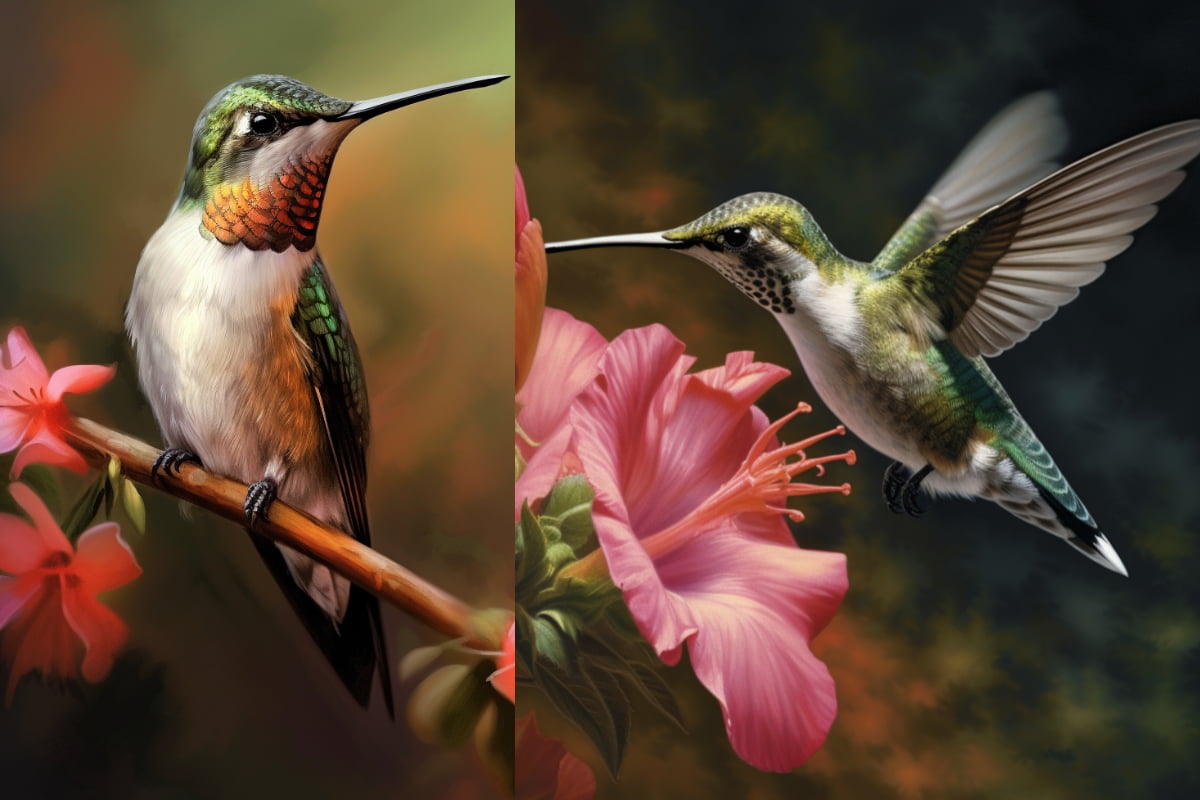The hummingbird is an extraordinary creature that captivates viewers with its stunning aerial displays and radiant feathers. These small birds can be found throughout the Americas, and those fortunate enough to witness their graceful movements often develop a special fondness for them.
However, for bird enthusiasts in Michigan, the presence of hummingbirds is fleeting. As autumn approaches, many wonder when these birds will depart from the state.
When Do Hummingbirds Leave Michigan?
Hummingbirds typically leave Michigan in late summer to early autumn, with most beginning their southward migration by late August to mid-September. Although a few may linger until the end of October. This departure is influenced by decreasing daylight hours and diminishing food sources like nectar-rich flowers.
To support these birds before their long journey, it is advisable for residents to keep their hummingbird feeders well-stocked during this period.
The Species Of Hummingbirds Commonly Found In Michigan
The most commonly found hummingbird species in Michigan is the Ruby-throated Hummingbird. This species migrates out of Michigan every year between late August and mid-September. However, a few of them sometimes stay until the end of October.
Migration patterns can vary, with adults typically leaving Michigan before the younger hummingbirds.
The Climate Change Connection
Climate change has the potential to influence the migration timings of hummingbirds, resulting in earlier or delayed departures. Warmer autumns could delay their departure, while changing climatic conditions may prompt an earlier exit if food sources become scarce earlier.
The Marvel of Migration
The journey of hummingbirds is quite remarkable. They can migrate up to 2,000 miles and travel without stopping for up to 18 hours each day. It’s amazing how these little creatures can accomplish such a big feat. Imagine a bird weighing less than a 10p coin flying from Michigan all the way to Central America!
Hummingbirds, particularly the Ruby-throated species common in Michigan, usually travel along the eastern coast of the US, skirting the Gulf of Mexico before reaching their tropical winter homes. This ensures they avoid large water masses, which pose a risk.
The Why’s and When’s of Departure
The drop in temperature in Michigan, as well as reduced daylight, signals to hummingbirds that it’s time to start their journey. This instinctual behavior ensures their survival during the harsher months when food sources diminish.
In Michigan, the decline of flowering plants, and hence nectar, is a crucial determinant. Hummingbirds consume up to twice their body weight daily. As their primary food source dwindles, it’s time to move.
Tracking Hummingbird Movements During Migration
Research on hummingbirds’ migration patterns is ongoing. Modern tracking methods, such as lightweight geolocators, are beginning to shed light on the precise routes these tiny birds take. Michiganders can participate in citizen science projects by noting the first arrivals and last departures of hummingbirds in their gardens, providing valuable data for understanding and conserving these mesmerizing creatures.
Tips for Michiganders: A Hummingbird Farewell
In the weeks leading up to their departure, you’ll observe a noticeable increase in hummingbirds’ feeding activity. This is an excellent time to keep your hummingbird feeders topped up with sugar water to aid their energy-intensive migration.
Provide sheltered areas in your garden, like dense shrubs or trees, which can offer hummingbirds protection from predators and a resting place.
As you notice a reduction in hummingbird activity, it’s a hint that the majority have embarked on their journey. However, always keep your hummingbird feeders up for a few more weeks for the stragglers or those starting their journey from further north.
The beauty of this migratory phenomenon is that it’s cyclical. Just as we feel the pang of their departure, there’s the joy of anticipation for their return in spring. Engage in planting nectar-rich flowers and maintaining feeders to welcome them back happily.
Final Thoughts
While the departure of hummingbirds from Michigan might evoke a sense of sadness, it’s a testament to the resilience and marvel of nature. As we bid them farewell, let’s remember the magic they bring into our lives and look forward to their return. After all, every goodbye promises a new hello.
Also, the more profound question we should ponder is, what stories would they tell if they could?
And as you sit on your porch, coffee in hand, watching the last of these avian wonders flit by, one wonders: How often do we truly appreciate the transient beauty that graces our lives?
